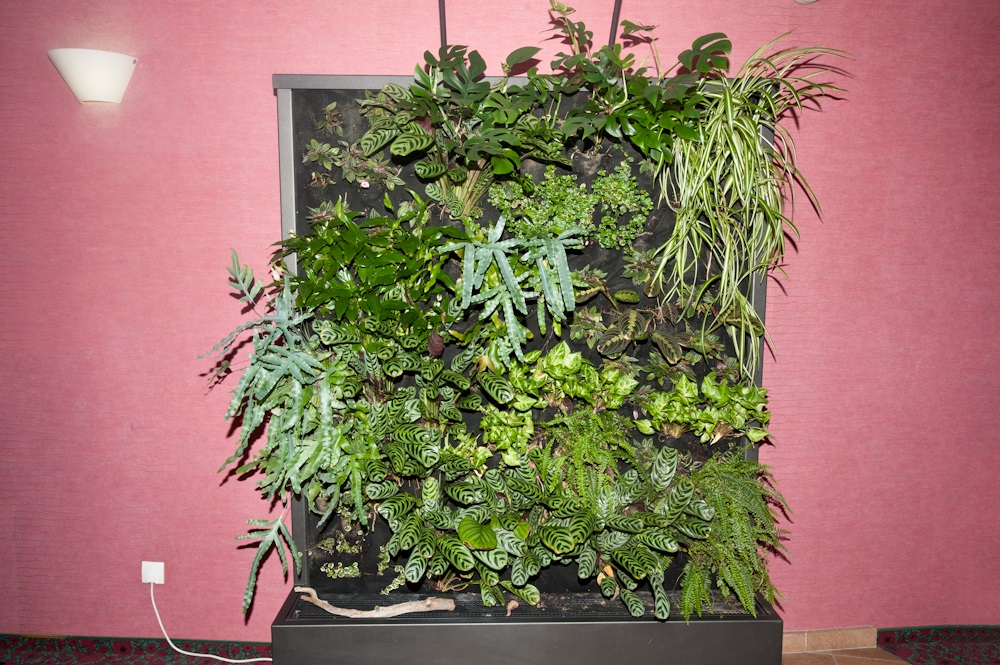Recent MA Photojournalism and Documentary Photography (Online) graduate Max Colson has been awarded a Leverhulme artist-in-residency grant of £15,000 to work with the UCL Urban Laboratory.
Max will work at UCL with the Laboratory’s Director, Dr Ben Campkin, in a residency titled ‘Hide and Seek: The Dubious Nature of High Security Spaces’.
The residency will develop Max’s final LCC MA project, extending the photographic investigations of his photojournalist alter ego, the paranoid Adam Walker-Smith, into the UK’s hidden infrastructure of security design and control.
The project aims to heighten viewers’ awareness of the way that security design, surveillance and paranoia interact within the urban environment, also using humour to highlight the limits of photography as documentary evidence.

From ‘Hide and Seek: The Dubious Nature of Plant Life in High Security Spaces’
We caught up with Max to find out more:
How did you become interested in the area of surveillance and security design?
I originally became interested in exploring how surveillance and security apparatus can be hidden within everyday public space. Delving into this area on my MA, I then became fascinated with highlighting the logistical and psychological difficulties of photographing ‘hidden’ security apparatus when one cannot easily tell where and what it is.
What do we need to know about your photojournalist alter ego Adam Walker-Smith?
Having discovered the landscape design programme ‘Crime Prevention Through Environmental Design’ (‘CPTED’), Walker-Smith realised that high security public spaces in London, which present themselves as being free and open, actually covertly guide behaviour through security design and monitor human activities through extensive surveillance infrastructure. The reason these things are not often observed is because they are carefully hidden and softened by the strategic deployment of vegetation.
This illuminating finding led to what could only be described as Walker-Smith’s intense paranoia as to the ‘innocence’ of all plant life in these spaces. His resulting photographs dramatically expose what he sees as the ‘suspect’ plants of securitised urban spaces (these plants are so-called for posing as ‘innocent’ decoration whilst actually being hidden parts of the security apparatus).
What does receiving this grant mean for you?
It gives me the financial freedom to focus on developing this particular project for a whole year, in collaboration with cutting edge researchers from UCL and other experts in the field of security design, which will culminate in an ambitious and immersive exhibition in Canary Wharf.
Also, as any artist will tell you, doing personal projects is an often solitary activity; when organisations support your projects like this it’s pretty incredible.
What direction do you hope to take your work in during your UCL residency, and beyond?
I’d like to develop Adam Walker-Smith’s investigation into the nature of hidden security design and present it as an immersive mixed media exhibition at Canary Wharf that makes people re-evaluate the public space that they use on a daily basis.
Photographic prints on a wall will be one element for sure but, in collaboration with built environment academics at UCL, I would like to create opportunities for the audience to engage with the project using a combination of interactive and audio elements; this will (I hope) bring the project, its exhibition and my photographic practice to the next level.
Tell us something you’ve discovered during Hide and Seek that surprised you.
Plants are incredibly versatile.
What most excites you most about the prospect of working within the UCL Urban Laboratory?
It’s a home to leading researchers engaged in the planning and design of the built environment; my work feeds on the research and critical ideas of these professionals, so it’s a fantastic opportunity to develop my work by being in such close proximity.
Which photographers or photojournalists working today do you most admire?
There are honestly too many to mention but I particularly enjoy the work of artists who playfully critique the nature of photographic documentation and/or its prevalence in the digital age, e.g. Joan Fontcuberta, Walid Raad, Mishka Henner, Taryn Simon, Thomas van Houtryve and Michael Wolf etc etc.
Max’s residency will take place across the 2014-5 academic year.
Read about MA Photojournalism and Documentary Photography (Online)


